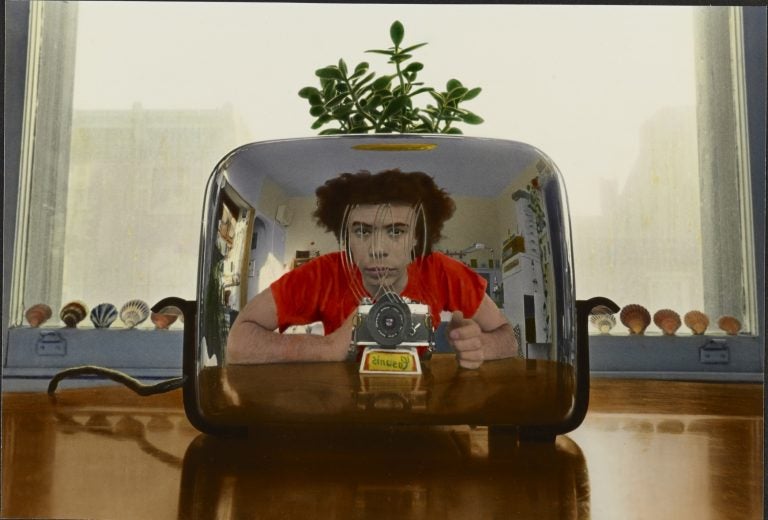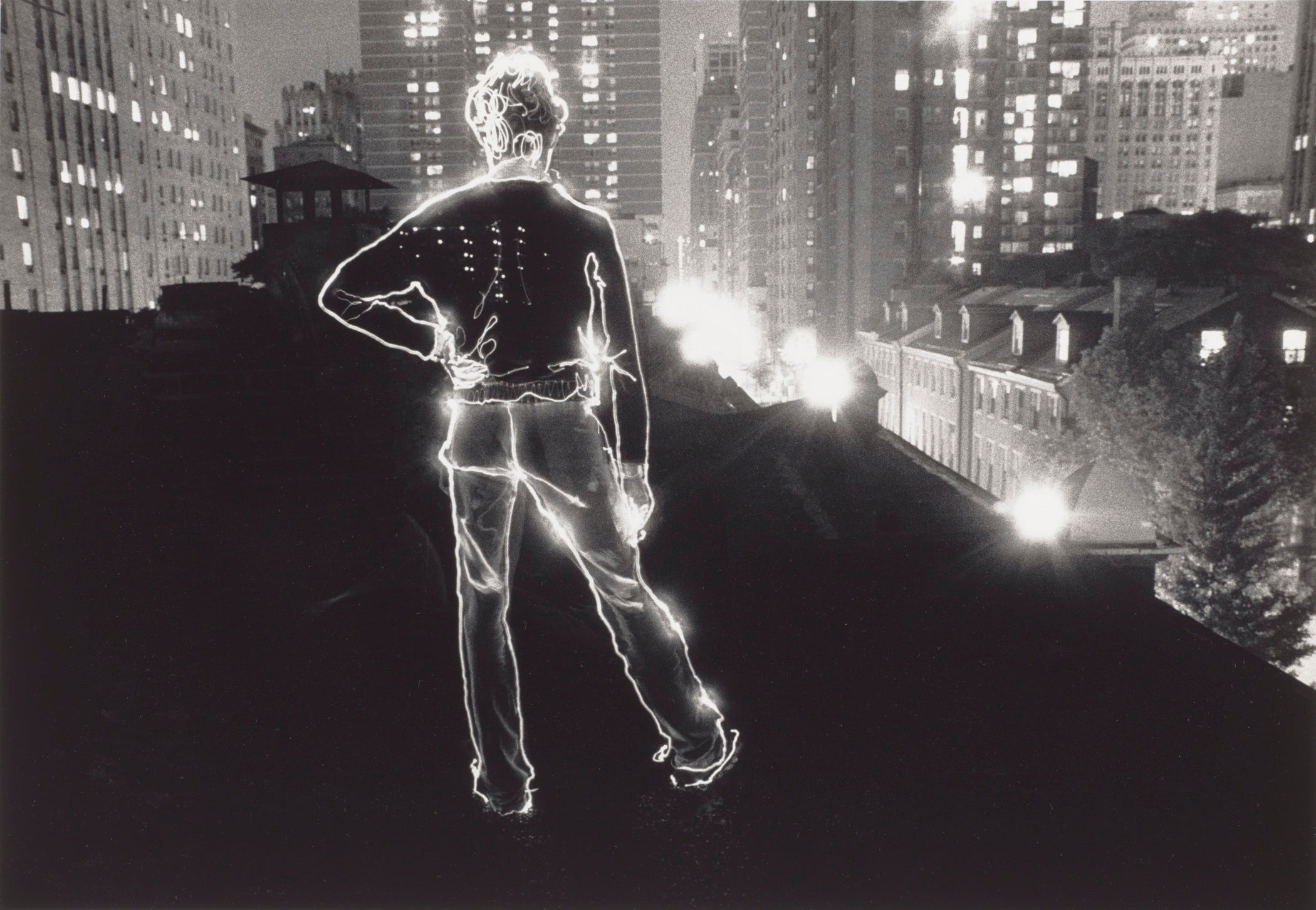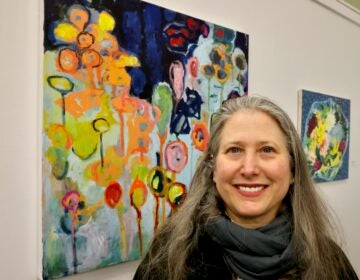Life, then death. Then life again. 50 years of pictures by David Lebe
The Philadelphia Museum of Art has the first major retrospective of David Lebe’s experimental photography, tracing his life as a gay man for a half-century.
Listen 2:16
David Lebe's "Unphotograph Seven - Self-Portrait in Toaster, January 4, 1975" is among the works included in a retrospective at the Philadelphia Museum of Art. (Philadelphia Museum of Art)
When David Lebe was studying photography in the late 1960s at what used to be the Philadelphia College of Art – now University of the Arts – he worked without camera equipment. He made pinhole cameras, a homemade box with no lens; and photograms with no camera apparatus at all, placing objects directly onto photographic paper and exposing them to light, creating silhouettes.
“A camera came between me and the experience of making a picture, and I really loved photography,” said Lebe, who also hand-painted his black and white prints with watercolors.
It was his light drawings that brought him to prominence in the 1970s. The pictures were made in the dark with extremely long exposures, using a flashlight to draw in the air. The result would be an image – often a posed male figure – outlined in light.

“To me, it was about energy and the separation between ourselves and the rest of the world,” Lebe said. “The ones of male nudes, it was a sexual thing. The energy you give off when you’re near someone you are attracted to — that feeling of energy emanating from the body.”
The Art Museum of Philadelphia has the largest collection of Lebe’s work, estimated at more than 200 pieces. “Long Light: Photographs by David Lebe,” on view until May, chronicles the evolution of his experimental style that was always rooted in his experiences as a gay man.
After graduation, Lebe joined the teaching staff of UArts in the 1970s, staying for two decades. At a time when AIDS was emerging and the fear of being outed was prevalent, Lebe let everyone know he was gay.
“I don’t think there were any out teachers,” he said during a visit to the Perelman Building, where his exhibition opened last week. “Some teachers were out to other faculty members, but no teachers were out to their classes. There were certainly gay people in art school, but you wouldn’t know it.”
Lebe continued making light drawings and hand-colored photograms, often of flowers. He also used his experimental formats to take sexually explicit pictures of men, which are on display in a side gallery with a posted warning for parents.
In the early 1990s Lebe left his longtime teaching position at UArts and moved to rural Columbia County in upstate New York with his partner, the artist Jack Potter. Both had contracted AIDS.
“I didn’t think I had long to live. This was before there were drugs for AIDS,” said Lebe. “Let’s get out of the city and have a last adventure, and be together in a quiet place, a healthy place, and we just did it. I didn’t expect it to be long term. We thought we would get sick and die.”
The only AIDS therapy Lebe and Potter could devise on their own was a healthy lifestyle – focused on sleep, low-stress, and a macrobiotic diet.
During that period, Lebe documented Potter’s morning rituals: showering, eating, and light exercises to show the slow pace of their lives. He took the pictures but never showed them, believing he would not live to see them printed.
“They’re here now on the wall. But, at the time, I was thinking, why am I doing this?” he said. “There was a pleasure of doing it, so I just did it. There was an enlightenment during that period. A lot of weight came off you. You didn’t have to worry about the future or of being successful. It was kind of wonderful and peaceful.”
That was 25 years ago. Since then, drug therapies have been developed to control AIDS. Lebe is now 70, an age he never dreamed he would reach.
Once he started treatment and realized he wasn’t necessarily going to die right away, Lebe said the pressures of being a working artist returned to his shoulders.
He has embraced digital photography and is making new work based on shadows from the sunlight streaming into his home. Some of those new pictures have been loaned to the exhibition.
He said he has retained some of the enlightenment from those first few years in Hudson Valley when life was tentative. Now that he’s 70, that feeling of pending mortality is creeping back.
“Every day is a gift,” he said. “It’s a cliché, but it’s true.”
WHYY is your source for fact-based, in-depth journalism and information. As a nonprofit organization, we rely on financial support from readers like you. Please give today.





